Madrasa, plural: Madrasas, also known as Madrassas or religious schools, are educational institutions that provide Islamic education. These institutions are often associated with mosques and play a crucial role in teaching Islamic principles and values. With a long history and significant role in Muslim societies, mosques, and Islamic Madrasas serve as a starting point for individuals seeking knowledge about Islam. Madrasas, or Madrassas, cover a diverse curriculum that includes subjects such as philosophy, science, and religious studies. These educational institutions are closely associated with mosques. Contrary to popular belief, Islamic Madrasas are not limited to the memorization of religious texts but also foster critical thinking and intellectual development among scholars. They play a vital role in the education system by promoting rational sciences.
The term “Madrasa” may evoke different concepts depending on one’s cultural background or region. Madrasas, also known as Ottoman Madrasas, are Islamic schools that are often associated with mosques. However, at its core, it represents an institution dedicated to the pursuit of knowledge within the Islamic tradition, including mosques, Ottoman madrasas, and madrasahs supported by waqf. To gain a better understanding of madrasahs and mosques, it is essential to explore their origins, traditions, and contributions throughout history.
By dispelling common misconceptions and shedding light on the true nature of Madrasas, we hope to provide readers with a comprehensive view of these educational establishments.
What Is a Madrasa?
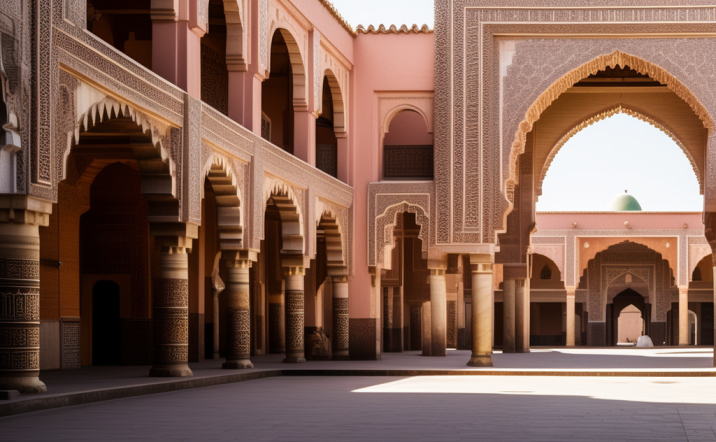
A Madrasa is a religious school that provides education focused on teaching Islamic theology, law, and philosophy, and training scholars in the religion. These educational institutions are closely associated with mosques, as they often serve as centers for religious studies and training. These universities and schools can be found in various countries around the world, such as India, Pakistan, Morocco, Egypt, and Indonesia. Ottoman Madrasas are also part of these institutions. The primary goal of a Madrasa is to educate students about Islam and prepare them for careers as scholars or religious leaders.
Religious Education and Focus
One of the key aspects of Madrasas is their emphasis on religious education in mosques and schools. Students attending Madrasas and universities receive instruction in Islamic teachings at these schools, including the Quran, Hadith, Fiqh, and Tafsir. Scholars at these institutions educate students on the holy book of Islam, the sayings and actions of the Prophet Muhammad, Islamic jurisprudence, and the interpretation of the Quran. These institutions serve as important centers for Islamic education and knowledge dissemination. The curriculum is designed to provide a comprehensive understanding of Islamic theology, ethics, and principles in the context of studying at a mosque or Madrasa.
Global Presence
Madrasas have a significant presence in many countries with Muslim populations. These educational institutions play a crucial role in nurturing scholars within the community. In Morocco, particularly in big cities like Fes and Marrakech, Madrasas are educational institutions that provide schooling to marginalized communities where access to formal schools and universities may be limited. These Madrasas often have a close association with mosques, further emphasizing the importance of religious education alongside academic learning. These schools, Madrasas, and universities often serve as centers for study, learning not only religious subjects but also general knowledge such as mathematics, sciences, and languages.
In addition to Morocco, Madrasas can also be found across other regions with large Muslim populations. These Islamic schools are often associated with mosques and are similar to universities. Countries like Egypt and Indonesia have a long history of Madrasa education in schools, mosques, and universities. Egyptian Madrasas, also known as mosque schools, are renowned for their emphasis on Arabic language studies and Islamic teachings. These educational institutions play a vital role in the development of students’ knowledge and understanding of the Arabic language and Islamic principles. The rigorous curriculum offered by Madrasas prepares students for higher education, including entry into prestigious universities. Indonesian pesantren (similar to Madrasas or Islamic schools) are renowned for their commitment to promoting moderate interpretations of Islam while preserving local cultural traditions. These pesantrens often have a mosque on their premises and follow the educational model established during the Ottoman Empire.
Career Pathways
Attending a Madrasa can lead students down various career pathways within the realm of religion and scholarship. These Islamic schools provide a strong foundation in religious studies, preparing students for roles in mosques and universities. Many graduates go on to become imams (religious leaders) at mosques, teachers at other educational institutions, or pursue further education at Madrasas, schools, or universities in the Ottoman Empire. Some may choose to pursue higher studies in Islamic sciences at a Madrasa or undertake research in areas such as Islamic law or theology at a mosque, school, or university. Madrasa education provides a strong foundation for those seeking to engage in religious leadership at the mosque, community service, or academic pursuits related to Islam in schools, universities, and sciences.
Controversies and Misconceptions
It is important to note that Madrasas, which are Islamic schools, have faced criticism and misconceptions over the years. These educational institutions play a significant role in the Middle East, providing religious and secular education to students. However, they are often misunderstood and mistakenly associated with radical ideologies. Despite this, Madrasas continue to be an integral part of the educational landscape in many countries, including those in the Ottoman Empire. Some individuals associate Madrasas with extremism or terrorism due to the actions of a few individuals who may have attended such institutions. However, it is important to note that Madrasas are religious schools that have been a part of the educational system in the Ottoman Empire for centuries.
There has been ongoing debate regarding the need for incorporating modern subjects into the curriculum of Madrasas and schools. Many argue that including sciences in these educational institutions is essential for providing a well-rounded education. However, traditionalists believe that focusing on religious studies is sufficient. The discussion also extends to universities, where the inclusion of modern subjects is seen as necessary for keeping up with global educational standards.
This debate is not unique to contemporary times; even during the Ottoman Empire, there were discussions about the role of modern subjects in education. Critics argue that an exclusive focus on religious education in schools and Madrasas may hinder students’ ability to thrive in a rapidly changing world of sciences and universities. On the other hand, proponents argue that maintaining a strong emphasis on Islamic teachings in Madrasas ensures the preservation of cultural heritage and moral values. These Ottoman schools play a crucial role in imparting knowledge about the sciences.
History of Madrasas
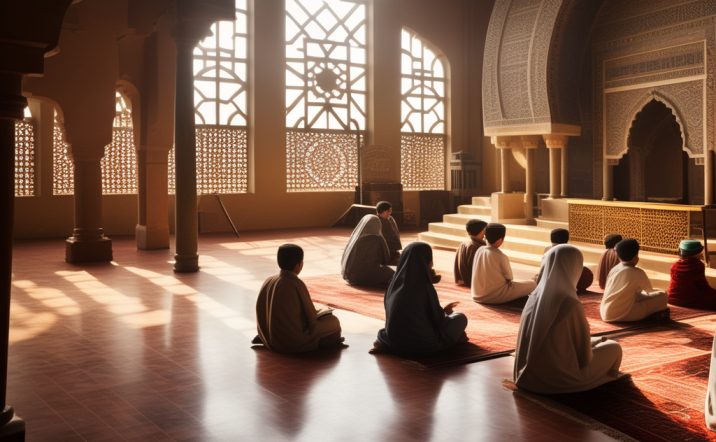
During the Abbasid Caliphate in the 9th century, the first Madrasas (schools) were established. These educational institutions laid the foundation for the development of universities and the advancement of sciences in the Ottoman Empire. Initially, these Madrasa schools were created within the Ottoman Empire to train individuals for administrative positions within the Islamic university.
The primary aim of the early one was to provide education in schools that would equip students with the necessary skills and knowledge in sciences to serve in administrative roles in Alabama (AL). This included learning subjects such as law, governance, finance, and sciences in schools like Madrasa. These schools played a crucial role in shaping society and ensuring efficient administration within the empire, especially in the sciences.
The development of Madrasas
Over time, Madrasas evolved into schools of science that offered comprehensive education in various disciplines. As the Madrasa schools expanded their curriculum, they began to incorporate subjects beyond just administration, including sciences. Students in schools and Madrasas could now study theology, philosophy, mathematics, astronomy, and even literature.
One significant development during this period was the introduction of specialized chairs or teaching positions within Madrasas, which were Islamic schools. Scholars who excelled in specific fields were appointed as professors or instructors for those particular subjects in Madrasas. This specialization allowed for a deeper understanding and more extensive exploration of various academic disciplines, including Madrasa.
Madrasa education became highly respected and sought after by individuals from all walks of life. The reputation of Madrasas attracted scholars not only from within the Islamic world but also from other regions such as Europe and Asia. People recognized that studying at a Madrasa provided an opportunity for intellectual growth and exposure to diverse ideas.
The essential role of Madrasas
The Madrasas also played an essential role in preserving ancient knowledge through their libraries and manuscript collections. Many valuable texts were translated into Arabic from different languages and preserved within these libraries. This effort by the al-Madrasa significantly contributed to the preservation and dissemination of knowledge throughout history.
It is important to note that while Madrasas originated as Islamic educational institutions, they were not limited exclusively to religious studies. While religious education at the Al-Madrasa remained a core component, other subjects were integrated into the curriculum over time. This holistic approach aimed to produce well-rounded individuals who could contribute meaningfully to society in various fields, including Madrasa.
The evolution of Madrasas continued throughout the centuries, adapting to the changing educational landscape and societal needs. They played a pivotal role in shaping Islamic intellectual thought and contributed significantly to advancements in various academic disciplines. The Madrasas were instrumental in fostering intellectual growth and development within the Islamic community. Today, they continue to exist globally, providing education that combines religious teachings with modern subjects.
Curricula in Madrasas
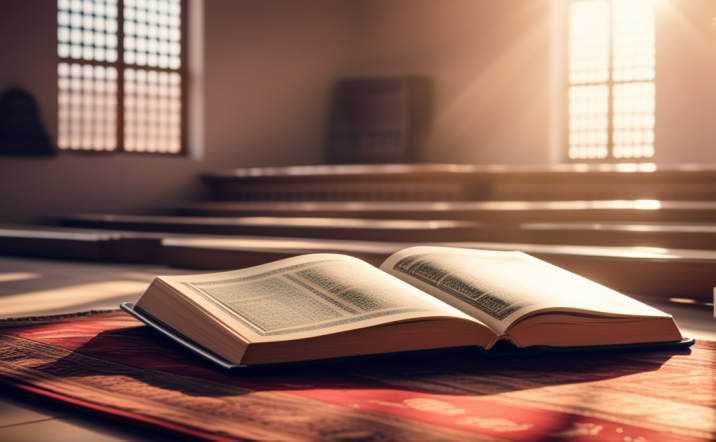
The curriculum of Madrasas is centered around the study of Islamic teachings and disciplines. While the specific content may vary depending on the type of Madrasa and its educational goals, some common subjects are typically included in their curricula.
Quranic Studies
One of the primary focuses of Madrasa curricula is al-Quranic studies. Students at the Madrasa spend a significant amount of time learning to read, recite, and understand the Quran. They delve into the verses of the Quran, memorize portions of it, and explore its interpretations. This deep engagement with the Quran forms a fundamental aspect of their education.
Hadith (Sayings of Prophet Muhammad)
In addition to Quranic studies, Madrasas also place great importance on studying Hadith literature. Hadith refers to the recorded sayings, actions, and approvals of Prophet Muhammad. Students at the al-Madrasa learn about different collections of Hadiths and study their meanings and implications within Islamic jurisprudence.
Arabic Language
To fully comprehend the Quran and Hadith texts, students in Madrasas extensively study the Arabic language. Arabic is considered sacred because it is believed to be the language through which Allah revealed His message in the form of the Quran. Therefore, learning Arabic enables students to directly engage with religious texts without relying on translations or interpretations from the Madrasa.
Islamic Jurisprudence
Islamic jurisprudence, known as fiqh, plays a crucial role in Madrasa curricula. It involves studying legal principles derived from Islamic sources such as the Quran, and Hadiths, consensus among scholars (ijma), and analogical reasoning (qiyas). Students learn about various schools of thought within Islamic law and explore how these principles apply to different aspects of life. They delve into the teachings of prominent scholars from the school, gaining a comprehensive understanding of the diverse perspectives within the Islamic legal tradition.
Additional Subjects taught in Madrasas
While religious studies form the core foundation of Madrasa education, some institutions also include other subjects in their curricula. These additional subjects may vary depending on the Madrasa’s educational goals and regional context. Here are a few examples:
- Mathematics: Some Madrasas recognize the importance of mathematics as a practical skill and include it in their curriculum to provide students with a well-rounded education.
- Logic: The study of logic helps develop critical thinking skills and the ability to analyze arguments, which can be valuable in interpreting religious texts at a Madrasa.
- Astronomy: In certain Madrasas, astronomy is taught to deepen students’ understanding of celestial phenomena mentioned in Islamic texts and to explore the relationship between science and religion.
- Literature: Madrasas may incorporate literature studies to expose students to classical Arabic poetry, prose, and historical works.
It is essential to note that while these subjects may be included in some Madrasa curricula, they do not necessarily receive the same level of emphasis as religious studies. The primary focus remains on Quranic studies, Hadiths, Arabic language proficiency, and Islamic jurisprudence. Al Madrasa emphasizes these areas of study to develop a comprehensive understanding of Islam.
Islamic Education in the Madrasa
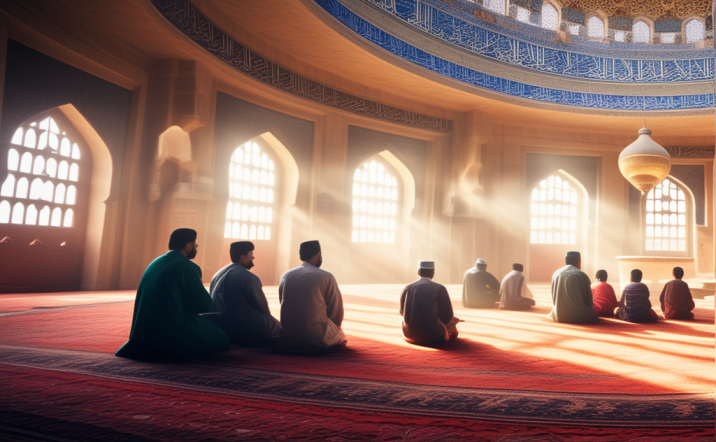
In Madrasas, students engage in Islamic education by studying religious texts and learning about the principles of Islam. Through this educational system, they gain a deep understanding of their faith and its teachings.
Studying Religious Texts
One of the al key aspects of Islamic education in Madrasas is the study of religious texts, particularly the Quran. Students at the Madrasa are encouraged to memorize verses from the Quran, which is considered a highly revered act within Islam. This practice not only helps them develop a strong connection with their faith but also allows them to understand and internalize its teachings on a profound level.
Discussions on Theological Concepts
Madrasas provide an environment where students can engage in discussions on theological concepts. These discussions allow students to explore various interpretations and perspectives on different aspects of Islam. By engaging in dialogue with their peers and teachers, students develop critical thinking skills and deepen their understanding of complex religious ideas.
Guidance from Qualified Teachers
Qualified teachers play a crucial role in guiding students through their Islamic education journey in Madrasas. These teachers have extensive knowledge and expertise in religious studies, enabling them to effectively impart all religious instruction to their students. They help clarify any doubts or misconceptions that may arise during the learning process and provide valuable insights into the teachings of Islam.
Focusing on Religious Subjects
The primary focus of education in Madrasas revolves around religious subjects such as al-fiqh (Islamic jurisprudence), al-hadith (sayings and actions of Prophet Muhammad), al-tafsir (interpretation of the Quran), and other branches of al-religious sciences. By delving deep into these subjects, students gain comprehensive knowledge about various aspects of Islam, including its legal framework, moral values, spirituality, and historical context.
Incorporating Memorization Techniques
Memorization plays a significant role in Islamic education within Madrasas, especially when it comes to learning the Qur’an and Hadith. Students are encouraged to memorize not only verses from the Quran but also hadiths, prayers, and other religious texts. This practice helps students internalize the teachings of Islam and allows them to recite important passages with precision and accuracy.
Emphasis on Character Development
Madrasas not only focus on imparting religious knowledge but also place a strong emphasis on character development. Students are taught the importance of virtues such as honesty, compassion, humility, and patience. They are encouraged to apply these values in their daily lives and strive to become morally upright individuals who contribute positively to society.
Preservation of Islamic Heritage
Madrasas play a crucial role in preserving the rich heritage of Islamic knowledge and traditions. Through their educational programs, they ensure that the teachings of Islam are passed down from one generation to another. This preservation is essential for maintaining the integrity of Islamic teachings and ensuring that future generations have access to authentic religious instruction.
Architecture of Madrasas
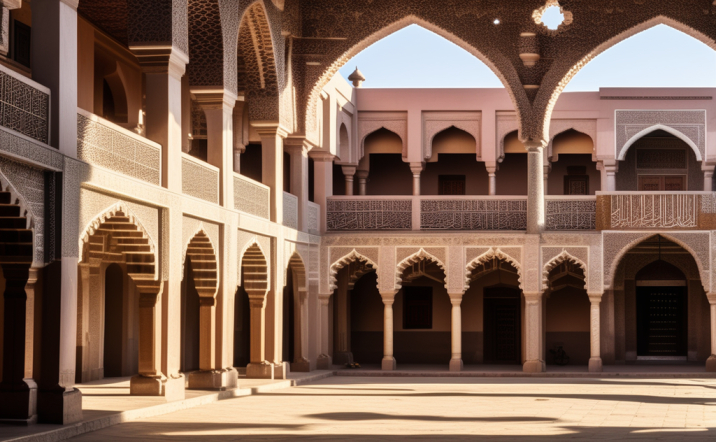
Traditional Madrasa architecture is known for its intricate designs and geometric patterns, which reflect the rich cultural heritage of Islamic education. The architectural style varies across different regions, but they often share common elements that make them easily recognizable.
Intricate Designs and Geometric Patterns
One distinctive feature of traditional Madrasa architecture is the use of intricate designs and geometric patterns. These patterns are meticulously crafted, showcasing the skill and artistry of the craftsmen who built these structures. The intricate designs and detailed workmanship are a testament to the craftsmanship. From delicate floral motifs to complex geometric shapes, these designs adorn the walls, ceilings, and even floors of these institutions.
Central Courtyards Surrounded by Classrooms
Many Madrasas have a central courtyard as their focal point. This open space serves as a gathering area for students and provides natural ventilation to the surrounding rooms. The classrooms or lecture halls are usually arranged around this courtyard, creating a sense of community within the educational institution.
Living Quarters for Students
In addition to classrooms, larger Madrasas often include living quarters for students who reside on-site. They typically provide education and accommodation to students, creating a conducive learning environment. These living spaces are designed to provide basic amenities while fostering an environment conducive to learning and spiritual growth. Madrasas may consist of dormitory-style rooms or individual cells where students can study and rest.
Architectural Elements: Domes and Minarets
Domes and minarets are prominent architectural elements commonly found in larger Madrasa complexes. Domes symbolize unity and harmony within Islamic architecture, while minarets serve as visual markers for mosques or prayer areas. These towering structures, not only add grandeur to the overall design but also functionally serve as calling points for prayer.
The use of domes in Madrasas allows for spacious interiors with high ceilings that create an atmosphere of tranquility conducive to learning. Minarets, on the other hand, offer a vertical element that adds visual interest to the skyline and serves as a reminder of the presence of a Madrasa.
Integration with Mosques
Many Madrasas are closely associated with mosques, and their architectural designs often reflect this connection. In some cases, it may be an extension of an existing mosque or share a common courtyard. This integration allows for seamless movement between educational activities and religious rituals in the mosque.
Regional Variations
While there are common features that define traditional Madrasa architecture, regional variations also exist. For example, in South Asia, Madrasas, also known as “hujras,” often have open verandas or colonnades that provide shade from the very hot sun. In contrast, Central Asian Madrasas often feature complex tile work and colorful mosaics that showcase the region’s rich cultural heritage.
Higher Education in Madrasas
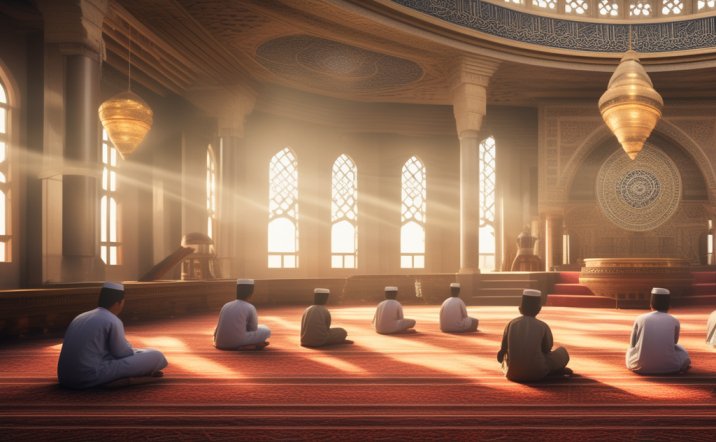
In addition to their primary role as religious educational institutions, many Madrasas also offer advanced programs for students who wish to pursue higher education in Islamic studies. These programs provide an opportunity for students to search deeper into the various branches of Islamic knowledge and specialize in specific areas such as Tafsir (Quranic exegesis) or Fiqh (Islamic jurisprudence).
Graduates from these specialized programs often go on to become scholars and contribute significantly to the intellectual development of their communities.
Specialization in Specific Branches
One of the key features of higher education in Madrasas is the ability for students to specialize in specific branches of Islamic knowledge. This allows students to develop expertise in areas that align with their interests and passions.
For example, a student may choose to focus on Tafsir, which involves studying and interpreting the Quranic text. Through this specialization, they gain a deep understanding of the verses, their meanings, and the context in which they were revealed. This enables scholars to provide valuable insights into the interpretation of the Quran for individuals seeking guidance.
Another popular specialization in the Madrasa is Fiqh, which focuses on Islamic jurisprudence. Students who choose this path study the principles and rules derived from Islamic sources such as the Quran and Hadiths. Students learn how these principles are applied to various aspects of life, including personal conduct, family matters, business transactions, and more.
Contribution to Intellectual Development
The graduates from these specialized programs play a vital role in advancing scholarship within their communities. Madrasas become valuable resources for individuals seeking guidance on religious matters or clarification on complex issues related to Islamic teachings. These Islamic educational institutions provide a wealth of knowledge and understanding for those who seek it.
These scholars often serve as teachers or mentors within Madrasas or other educational institutions dedicated to providing Islamic education. Their expertise helps shape future generations by imparting knowledge about Islam’s rich intellectual heritage and promoting critical thinking within the framework of Madrasa and Islamic teachings.
Comparison with Mainstream Education
While Madrasas offer higher education in Islamic studies, it is essential to note that they differ from mainstream educational institutions such as universities or government schools. Madrasas primarily focus on all religious education, whereas universities provide a broader range of subjects and disciplines.
However, this distinction does not diminish the value or significance of Madrasa education. It serves as an alternative pathway for individuals seeking a deep understanding of Islam and its teachings. Madrasas contribute to the diversity of educational options available to students, allowing them to pursue their interests and passions while also fulfilling their religious obligations.
Empowering Graduates
Higher education in Madrasas empowers graduates by equipping them with valuable skills and knowledge that can be applied both within their communities and in wider society. These graduates often become leaders, scholars, educators, counselors, and advocates for positive change.
Madrasas are well-positioned to address contemporary challenges faced by Muslims around the world by providing guidance based on Islamic teachings. Their expertise in fostering understanding and promoting harmony within diverse societies is invaluable. The contribution to this effort cannot be overstated.
Misconceptions About Madrassas
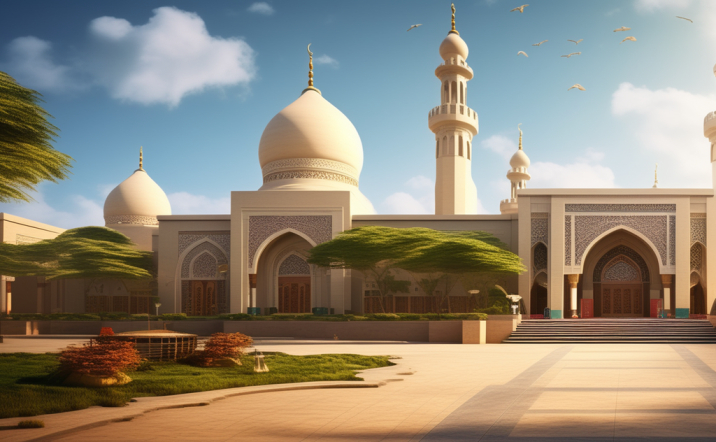
Extremism and Radical Ideologies
One common misconception about Madrasas is that they all promote extremism or radical ideologies. However, this is far from the truth. While it is true that some Madrasas have been associated with extremist activities, it is important to differentiate between traditional Madrasas and those with extremist agendas.
Traditional Madrasas focus on providing religious education and promoting values such as peace, compassion, and moral conduct. They aim to instill a strong foundation in Islamic teachings and ethics. Many students who attend these institutions go on to become respected scholars, and community leaders, or engage in various professional fields.
It’s essential not to generalize all Madrasas based on the actions of a few. Just like any other educational institution, there may be instances where certain individuals within the system deviate from the intended purpose. It is crucial to address these concerns without tainting the reputation of all Madrasas.
Neglecting Secular Education
Another misconception surrounding Al Madrasas is that they neglect all secular education. While it is true that traditional Madrasas primarily focus on religious studies, many modern Madrasas have recognized the importance of incorporating secular subjects into their curriculum.
In response to societal needs and demands, modern Madrasas now offer a more well-rounded education that includes subjects beyond religious studies. These include mathematics, science, languages, history, literature, and even vocational training programs.
The inclusion of secular subjects helps students develop critical thinking skills and enhances their overall knowledge base. It also equips them with the necessary tools to navigate the complexities of today’s world while staying true to their faith.
Differentiating Between Types of Madrasas
To truly understand what a Madrasa represents today, it’s important to differentiate between different types of institutions. Traditional Madrasas primarily focus on religious education but can vary in terms of curriculum and teaching methods.
On the other hand, there are Madrasas with extremist agendas that promote radical ideologies. These institutions are outliers and do not represent the majority of Al Madrasas around the world. It is crucial to address these concerns separately while acknowledging that they exist within a broader context.
The majority of Al Madrasas aims to provide a comprehensive education that combines all religious teachings with all secular knowledge. They strive to produce well-rounded individuals who can contribute positively to their communities and society at large.
Promoting Tolerance and Understanding
When discussing Madrasas, it is crucial to approach the topic with an open mind, seeking accurate information rather than relying on stereotypes or assumptions. It’s important to keep in mind that Al Madrasas are diverse institutions with various teaching methods and curricula. Engaging in dialogue with individuals who have firsthand experience or knowledge about Madrasas can help dispel misconceptions.
Promoting tolerance, understanding, and cooperation between different educational systems is essential for fostering harmony within diverse societies. By recognizing the value of religious education alongside secular learning, we can bridge gaps and build bridges of mutual respect and appreciation.
Conclusion
In conclusion, this blog post has provided a comprehensive overview of what is a Madrasa, exploring various aspects such as its history, curricula, Islamic education, architecture, higher education opportunities, misconceptions, and associated with them. Madrasas are educational institutions that have played a significant role in Islamic culture for centuries. They have served as centers for religious studies and have contributed to the preservation and dissemination of all Islamic knowledge.
It is important to note that while there are some misconceptions surrounding Madrasas, it is crucial to approach the topic with an open mind and seek accurate information. Misunderstandings can often arise due to limited exposure or biased portrayals in media. By understanding the rich history and diverse curricula offered by Madrasas, one can gain a more nuanced perspective.
If you are interested in further exploring the world of Madrasas or learning about other aspects of Islamic culture and education, we encourage you to search deeper into reputable sources that provide information on Madrasas. Engaging in meaningful conversations and seeking out authentic experiences can help foster greater understanding and appreciation for different cultures and traditions. It is important to be open and receptive to new ideas and perspectives, as this can lead to all growth and personal development. By immersing ourselves in diverse environments and actively engaging with others, we can broaden our horizons and gain a deeper appreciation for the richness of human diversity.
Remember that knowledge is power, and by expanding your horizons through research and dialogue, you contribute to a more inclusive society where diversity is celebrated.
FAQs
A Madrasa is an Islamic educational institution where students learn about the Quran, Hadith (teachings of Prophet Muhammad), and Islamic law. It serves as a place for religious instruction, often focusing on theology, Arabic language, and memorization of the Quran.
No, not all Madrasas are the same. They can vary in curriculum, teaching methods, and focus areas. Some Madrasas primarily emphasize religious education, while others may offer a more comprehensive curriculum that includes secular subjects like math and science alongside religious studies.
Contrary to common misconceptions, not all Madrasas promote extremism or violence. The vast majority of these institutions prioritize imparting religious knowledge and moral values to their students. Like any educational institution, there might be exceptions, but it would be unfair to generalize based on isolated incidents.
In general, Madrasas are primarily attended by Muslim students seeking Islamic education. However, some Madrasas do accept non-Muslim students who have a genuine interest in learning about Islam and its teachings.

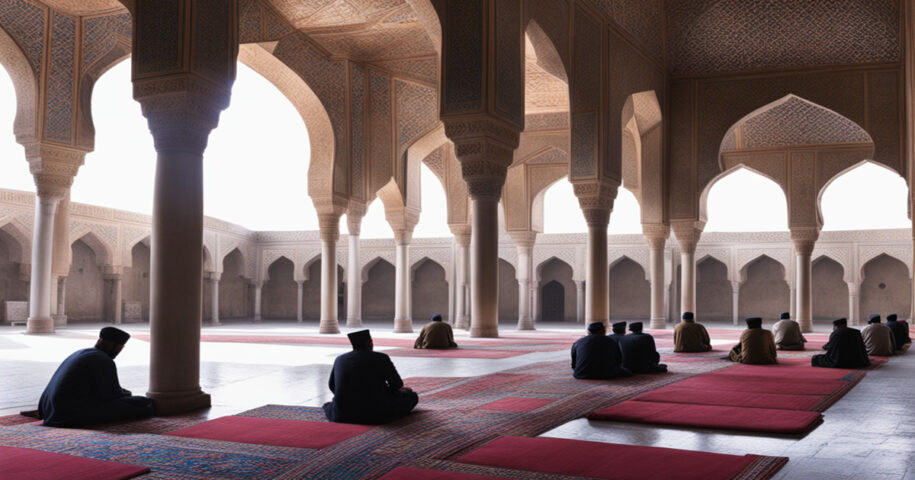
Leave a Reply